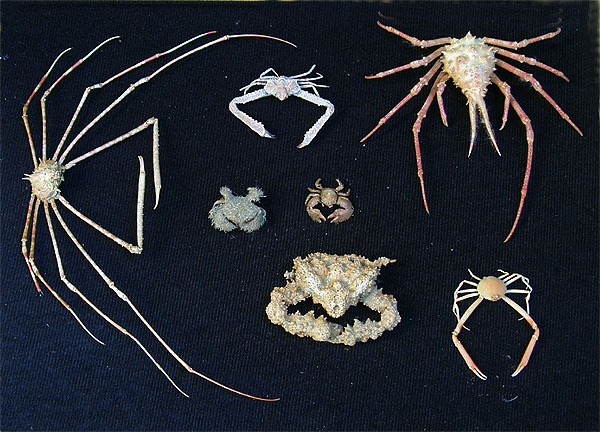Crabs of the World |

|
Crabs have an important place in Zymoglyphic culture. When dead, they often look as though they are just holding a long pose, and so make excellent diorama characters. They are nautical mechanical marvels, from the tight, interlocking parts of a box crab to the implausibly leggy spider crabs. Some, such as the fiddler crab, verge on becoming "eccentric contraptions", surreal beings whose very existence seems impossible. The lack of gravitational pull underwater allows the development of unusual forms.

Part 1: A rogue's gallery selected from the Museum's crab collection
Row 1: Red stone crab (Atergatis floridus) - Blue crab (Callinectes sapidus) - Box crab (Calappa calappa)
Row 2: Purse crab (Randalia sp.) -Spider crab (Libinia sp?) - Spider crab (Majidae?)
Row 3: Leopard crab (Hepatus epheliticus) - Hermit crab (Pagurus impressus) - Fiddler crab (Uca sp.) - Swimming crab (Portunus spinimanus)
Row 4: Pacific mole crab (Emerita analoga) - Purple shore crab (Hemigrapsus nudus) - Porcelain crab (Petrolisthes cinctipes) - Kelp crab (Pugettia producta) - Hairy crab (Hapalogaster mertensii) - Matuta banksii

Part 2: Recent acquisitions
Left: Phalangipus hystrix
Top: Platylambrus validus - Naxoides mammillata
Middle: Pilumnus verspertilo - Porcellana platycheles
Bottom: Daldorfia horrida - Randalia eburnea
Thanks to Jeff Shields and other fine folks at The Crustacean Society for assistance in identifying these specimens. Any further identification or corrections would be welcome!